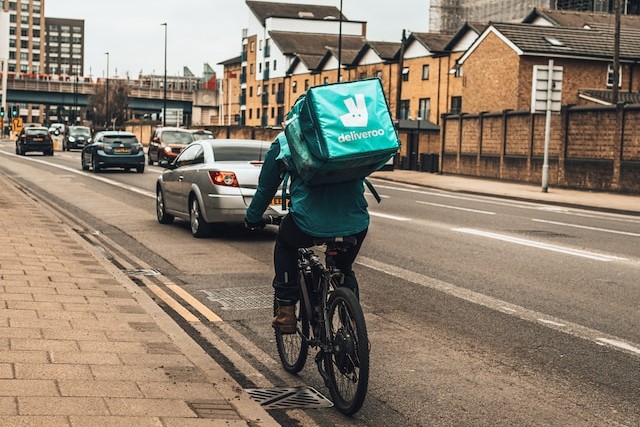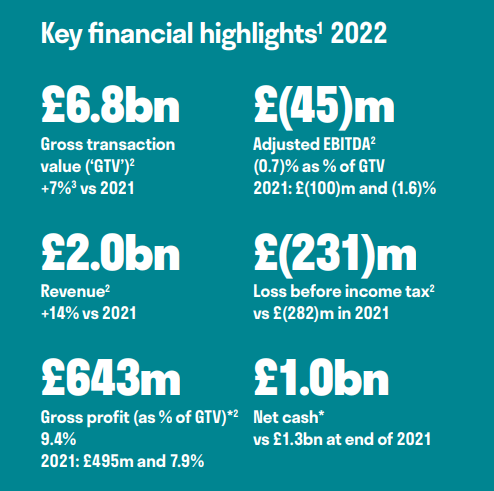Before we dive deep into the SWOT analysis, let’s get the business overview of Deliveroo. Deliveroo is a popular online food delivery company that connects consumers with their favorite restaurants. The company operates primarily in the UK, Australia, Belgium, Ireland, Spain, France, Hong Kong, Singapore, United Arab Emirates, Kuwait, and the Netherlands, among other countries. However, the specifics may have changed since then.
Here’s a basic overview of Deliveroo’s business model:
- Platform: Deliveroo operated a platform business model, acting as a marketplace that connects customers, restaurants, and delivery riders. Customers could order from various restaurants via Deliveroo’s website or mobile app.
- Ordering and Delivery: Once a customer places an order, the restaurant prepares the food, and a Deliveroo rider picks up the order and delivers it to the customer’s location. The company used a complex algorithm to assign delivery riders to orders and calculate the most efficient delivery routes. In 2022, it delivered 299 million orders to consumers globally.
- Revenue Streams: Deliveroo’s primary revenue stream was the commission it charged on each order placed through its platform. This fee varied but was typically around 20-30% of the order value. Additionally, Deliveroo charged customers a delivery fee and a small service fee in some markets. The company also earned revenue from its subscription service, Deliveroo Plus, which offered members free delivery for a monthly fee.
- Stakeholders: Deliveroo’s key stakeholders were its customers, partner restaurants, delivery riders (typically self-employed), and investors.
- Expansion and Diversification: Deliveroo has explored various strategies to grow and diversify its business over the years. This included launching a grocery delivery service, expanding into new geographic markets, and testing a “dark kitchen” concept under Deliveroo Editions. Dark kitchens are delivery-only kitchens that allow restaurants to expand their reach without opening a new physical location.
In 2022 Deliveroo averaged 7.4 million monthly active consumers (‘MACs’) across its 10 markets. This was up 6% on the 2021 average of 7.0 million.
How does Deliveroo make money | Business Model
Here is the SWOT analysis of Deliveroo
A SWOT analysis is a strategic planning tool used to evaluate the Strengths, Weaknesses, Opportunities, and Threats of a business, project, or individual. It involves identifying the internal and external factors that can affect a venture’s success or failure and analyzing them to develop a strategic plan. In this article, we do a SWOT Analysis of Etsy.
SWOT Analysis: Meaning, Importance, and Examples
Strengths
- Brand Recognition: Deliveroo’s strong brand recognition in its markets of operation provided a competitive advantage and helped to attract new customers.
- Strong Network of Partner Restaurants: Deliveroo’s platform included a wide range of restaurants, from well-known chains to local favorites, which helped to attract a diverse customer base.
- Technological Innovation: The company’s use of data science and machine learning algorithms enabled it to efficiently assign delivery riders and calculate the fastest delivery routes, improving the customer experience.
- Geographical Diversification: Deliveroo operates in multiple countries across Europe, Asia, and the Middle East, reducing its reliance on any single market.
- Business Model Adaptability: The company was quick to adapt to changing market conditions and consumer needs. For example, during the COVID-19 pandemic, Deliveroo expanded its offerings to include grocery delivery.
- Subscription Service: Deliveroo Plus, the company’s subscription service, helped to generate recurring revenue and improve customer loyalty.
- Dark Kitchens (Deliveroo Editions): The concept of “dark kitchens” allowed Deliveroo to facilitate restaurants’ expansion without the need for physical spaces, thus broadening its food offering and potentially increasing its commission revenue.
Weaknesses
- Dependence on Gig Economy: Deliveroo’s business model relies heavily on gig economy workers, often referred to as “riders,” who are generally not classified as full employees. This has led to legal and regulatory challenges in some markets, where there’s increasing scrutiny over workers’ rights in the gig economy.
- Profitability: Like many tech-driven delivery services, Deliveroo has struggled with profitability. The cost of expanding into new markets, maintaining a competitive edge, and dealing with the operational complexities of food delivery have weighed heavily on the company’s bottom line.
- Competition: The food delivery market is highly competitive, with major players such as Uber Eats and Just Eat in many of Deliveroo’s key markets. This intense competition can pressure profit margins, as companies may need to lower fees or invest in marketing campaigns to attract customers.
- Market Penetration: Despite its international presence, Deliveroo has struggled to establish a dominant position in some markets. In some areas, local competitors have stronger brand recognition and customer loyalty.
- Regulatory Challenges: Deliveroo, like other digital platforms, faces regulatory risks in various markets. These risks include potential changes to employment law, food safety regulations, and data protection rules.
- Customer Retention: Customer loyalty can be fickle in the highly competitive food delivery industry. Customers may switch between platforms based on price, delivery speed, and restaurant availability.
Opportunities
- Expansion into New Markets: Deliveroo could expand into new geographical markets where online food delivery services have yet to be fully explored, or the market is still growing.
- Diversification of Services: Deliveroo could diversify its services beyond food delivery. For instance, it started delivering groceries during the COVID-19 pandemic, which was well-received and could be further expanded.
- Partnership with More Restaurants and Retailers: Building more partnerships with restaurants and other retailers could attract a wider customer base and increase the number of orders.
- Advanced Technology: There’s an opportunity for further technological innovation, including improving algorithms for more efficient deliveries and using data analytics for better business decisions.
- Sustainability Initiatives: As consumers become more conscious about environmental issues, there are opportunities for Deliveroo to implement more sustainable practices, such as eco-friendly packaging or incentives for reducing carbon emissions.
- Dark Kitchens: The further expansion of its “Deliveroo Editions” dark kitchen concept could provide a profitable avenue for growth. These are delivery-only kitchens that allow restaurants to prepare food without operating a full-service, dine-in establishment.
- Subscription Services: There may be further opportunities to enhance the company’s Deliveroo Plus subscription service, such as additional perks or benefits to enhance customer loyalty.
Threats
- Competition: The food delivery industry is highly competitive, with numerous significant players such as Uber Eats, Just Eat Takeaway, and GrubHub. Increased competition could lead to price wars, potentially squeezing profit margins.
- Regulatory Changes: Regulation changes, especially regarding gig economy workers, could pose a significant threat to Deliveroo. Some jurisdictions are considering laws requiring companies like Deliveroo to treat their delivery riders as employees, potentially leading to increased costs.
- Economic Conditions: Economic downturns or uncertainties could impact consumer spending, potentially decreasing order volume.
- Operational Challenges: The complexity of food delivery operations can lead to difficulties, including food quality issues, delivery delays, and other logistical problems.
- Data Breaches: As a digital platform, Deliveroo is vulnerable to data breaches, which could damage the company’s reputation and result in significant costs.
- Reliance on Partners: Deliveroo’s reliance on partner restaurants also exposes the company to risk. If a major partner were to withdraw from the platform, this could impact the availability of popular food options and thus affect Deliveroo’s attractiveness to customers.
- Environmental Impact: Increasing concern about environmental issues, such as carbon emissions and packaging waste, could threaten Deliveroo. If the company does not adequately address these concerns, it could face backlash from consumers or regulatory bodies.












